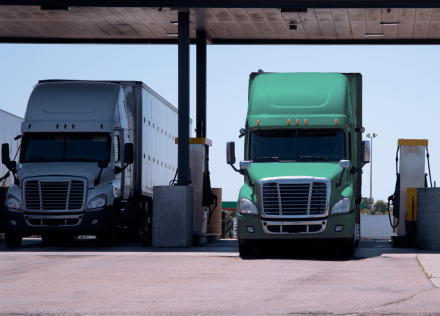
Do you already have your own car hauling business but would not like to stop and consider new scaling strategies? In this case, the experience of other successful companies in this area will be useful to you. Below, we have listed six valuable insights that owners of car-hauling businesses in the US shared with us. This article will also be useful if you have already read its previous part on how to start a car hauling business.
Establish Trusting Relationships with Your Partners
The desire to maintain friendly relationships with clients is good, but it is unlikely to be enough for a successful trucking business. In particular, as the number of your clients grows, you will have to not only gradually introduce automation but also delegate certain tasks to third-party partner contractors. Thanks to this approach, you will narrow the area of competence of your employees and will also be able to use your partnerships to open new channels for attracting potential customers.
As for the practical implementation of this advice, the best solution is to establish communications with businesses relevant to your topic in your region. Of course, this will require some effort and time from you, but in the end, this approach pays off in full.

Define Your Expenses
To scale a trucking business, you will need new investments, so before committing to a specific growing strategy, you should understand what expenses you regularly face and whether your budget allows for this process to happen without compromising your current business operations. Here are some specific recommendations on how to get better control over your expenses.
- Deploy a transportation management system (TMS) and other solutions for centralized access to financial data and operations. The implementation of such solutions will allow your company to get at its disposal powerful tools for collecting data, analyzing it, and generating reports based on it. In addition, advanced solutions can also ensure route optimization – both in advance, taking into account partner fuel stations, and in real time, according to current traffic jams, highways closed for repairs, severe weather conditions, etc.
- Calculate the cost per mile. Generally speaking, this is one of the key indicators that every car-hauling company should know. At the same time, many businesses neglect to calculate it – that’s why they can face exceeding planned monthly expenses. Fortunately, some TMS solutions update the values of these indicators in real time, so you don't have to perform these calculations yourself.
- Calculate the overhead costs associated with maintaining your fleet, salaries for your office staff, renting premises, utility bills, insurance, taxes, etc. These expenses are not directly related to the cost of fuel and drivers’ salaries; however, they usually make up a significant part of the budget of car hauling companies. Therefore, carefully planning these expenses will give you a better understanding of what budget you can allocate for your company’s future development.
- Reduce the risks associated with cargo theft. Since cargo theft is a fairly common problem in the United States, your car-hauling company needs to try to minimize the risks associated with it. For example, you can use ELD devices (even if your drivers are engaged only in local cargo transportation and the purchase of such equipment is not mandatory under current legislation) or GPS sensors that will help you track the location of your trucks online.
Ultimately, a comprehensive understanding of your expenses across the board will likely lead you to look for strategies to reduce them.
Optimize Fuel Costs
Fuel costs are worth special consideration as they are the largest cost item in the trucking industry. While most of the savings can be achieved by optimizing the routes we discussed above, you can gain even greater control over these costs by purchasing fuel cards for your drivers. In this case, every fuel purchase at a partner gas station will be automatically transferred to your digital accounting system, and you will not lose track of a single cent spent.
In addition, you will also have to take into account the provisions outlined by the International Tax Foundation, according to which your fuel tax may increase depending on the total volume of fuel purchased by your company over a certain period. That's why it makes sense to consider purchasing fuel at the lowest base price (to understand the feasibility of choosing this option, you just need to calculate your fuel costs using the formula “fuel price minus taxes”).
Use the Growth Calculation Formulas
Many companies follow certain mathematical models when planning their development strategies. So, you can do the same.
In particular, you will first have to determine the budget needed to develop your business (for example, purchasing new equipment, renting new offices, hiring new employees, etc.). After that, you will have to calculate the current annual fixed costs for your fleet and the staff that maintain it. Ultimately, to break even in difficult times, you must plan your resources to recoup these additional costs – that is, to add a new budget for development to the current budget for truck maintenance and patches.
This way, you may find that your initial scaling goals will take longer to achieve safely than you originally thought. Alternatively, you will have to moderate your ambitions and reduce the budget and volume of purchases necessary for scaling. After all, when growing, you must avoid burnout of your employees, violation of labor laws for drivers, etc.
Reduce Your Paperwork
The paper document flow is outdated. This is unreliable and time-consuming; moreover, your employees may mistakenly enter incorrect data into reports or fail to reconcile them with primary sources. Because of all these risks, growing companies are increasingly seeking to digitize all documents that accompany their business processes and benefit from this.
For example, you can implement into your existing IT infrastructure software solutions that will help you manage a trucking company more efficiently than ever before. These can be load boards, TMS systems, which we talked about above, ePod apps, etc. All this will help you optimize your data-related operations, and the boost will be noticeable within the first few weeks after their deployment.
Use Haulk
Finally, you can satisfy almost all the above-mentioned recommendations for a trucking business with Haulk TMS. This is a comprehensive solution with an integrated ePod driver application that can lay a strong foundation for the further evolution of your business.
Specifically, with its help, you can automate the management of your orders, optimize cargo delivery, achieve visibility of your trucks in real time, and also get powerful tools for analytics and reporting. This solution has a low entry threshold and can be integrated with other software that is already used in your company. To see in practice the capabilities of this TMS and check how it can help to grow a trucking company, you can download its free trial version right now.








